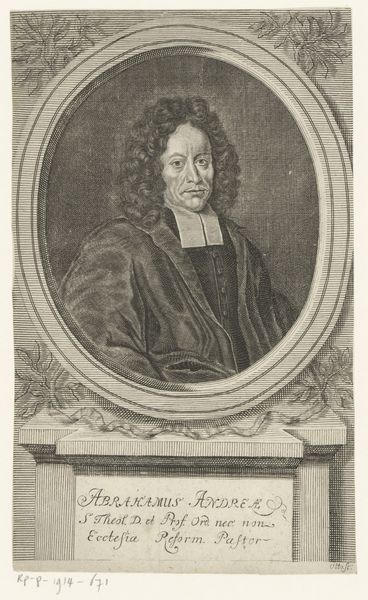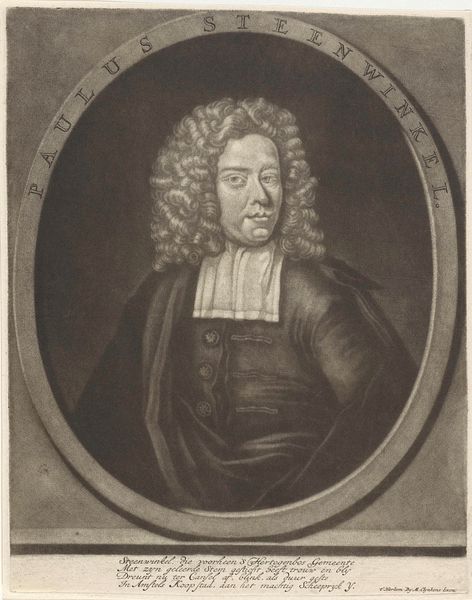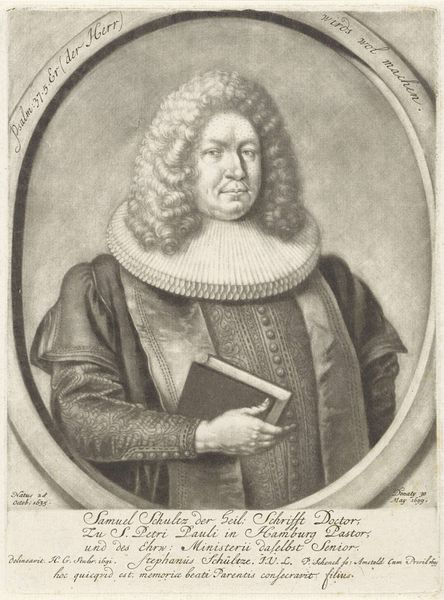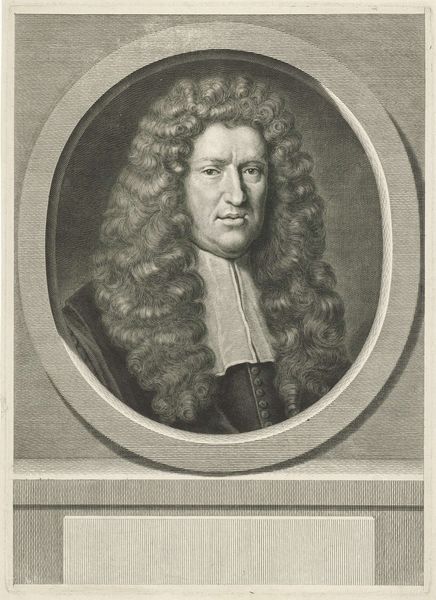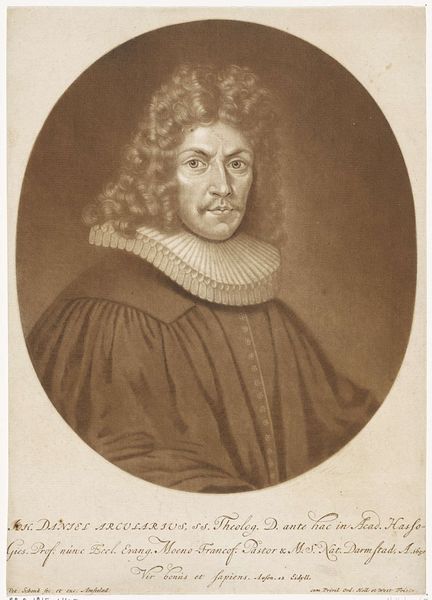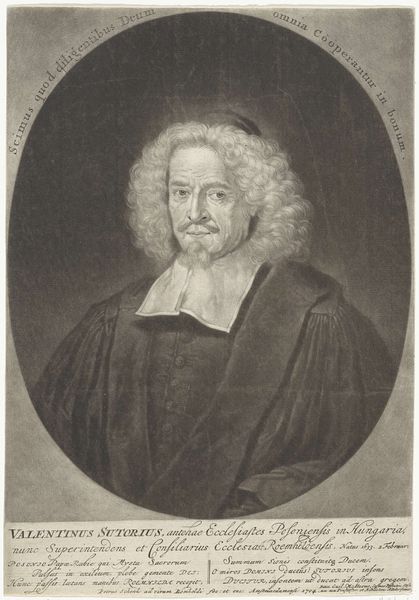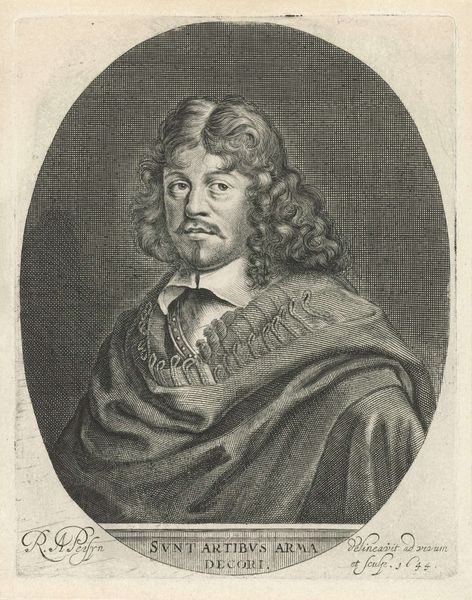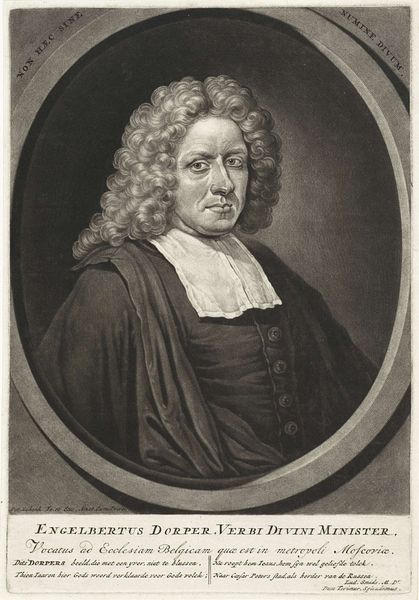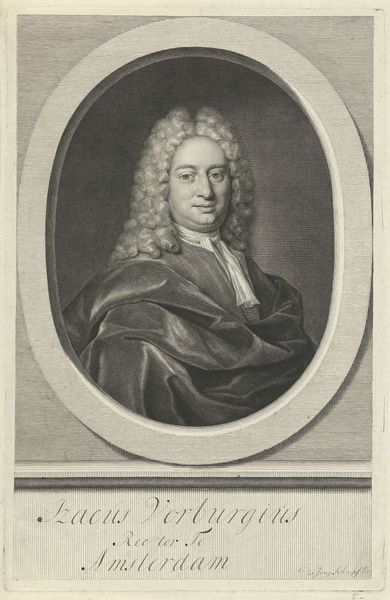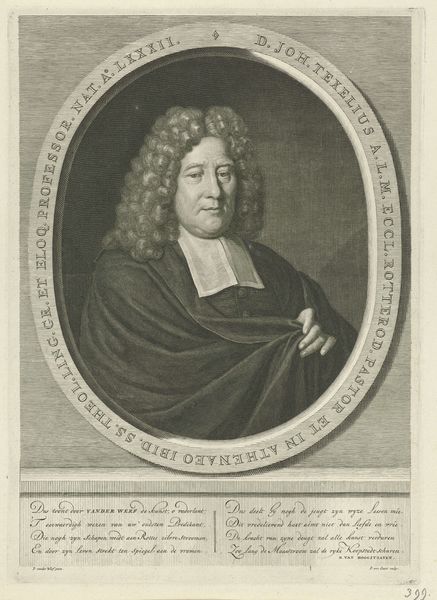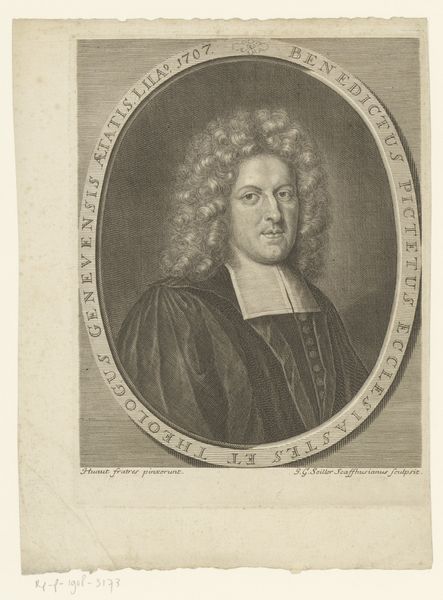
engraving
#
portrait
#
medieval
#
baroque
#
line
#
history-painting
#
engraving
Dimensions: height 292 mm, width 250 mm
Copyright: Rijks Museum: Open Domain
Curator: Let’s take a moment to appreciate this striking engraving: “Portret van Willem van Haren," made sometime between 1680 and 1700 by Petrus Aeneae. I find something almost unsettlingly direct about his gaze. Editor: Unsettling, yes, and perhaps a bit melancholy? Look at the way the light catches the lace at his throat. It’s exquisite detail, but the overall impression is of formality and… restriction, perhaps. Engraving lends itself to such a sense of control. Curator: It is indeed all in the process; think of the engraver's labor meticulously carving the image onto a metal plate and then repeatedly transferring it to paper. This lends itself beautifully to line work, yet seems detached from the individual behind the artwork, or perhaps the one represented within it. How might his social standing be linked to such meticulous methods, do you think? Editor: Absolutely. Consider Van Haren’s status; the text proclaims him "Generosissimus et Nobilissimus" a leader, academic, and diplomat. The engraving medium, with its reproducibility, made his image widely accessible, reinforcing his status among his peers. And yet, consider also, it puts this wealthy individual into a piece of print and thus also facilitates his appropriation to others... A clever, and possibly disruptive use of the technology available. Curator: Precisely. While undeniably impressive, almost heroic with his curly wig, it's a very calculated heroism, I'd say. One carefully crafted and disseminated for a particular audience and end, both solidifying his power and his reputation. I feel the lack of softness, or rather the absolute mastery of line makes that impression all the more potent. Editor: And there lies the rub. It isn’t really a painting at all; there are many intermediary steps, meaning this Van Haren had little direct connection to its execution beyond likely commissioning the work. The means by which his portrait was manufactured inherently complicate its status as fine art; it is far closer to a functional item, such as propaganda or a calling card! Curator: Interesting! It seems my first impressions were accurate after all. Thank you for reminding us all to consider the labor of art, or perhaps even, its lack thereof! Editor: Indeed. A materialist understanding pushes us to ask: how does process and product influence our readings? Hopefully, now visitors can appreciate the complexity beneath the surface of Willem van Haren's perfectly respectable face.
Comments
No comments
Be the first to comment and join the conversation on the ultimate creative platform.
